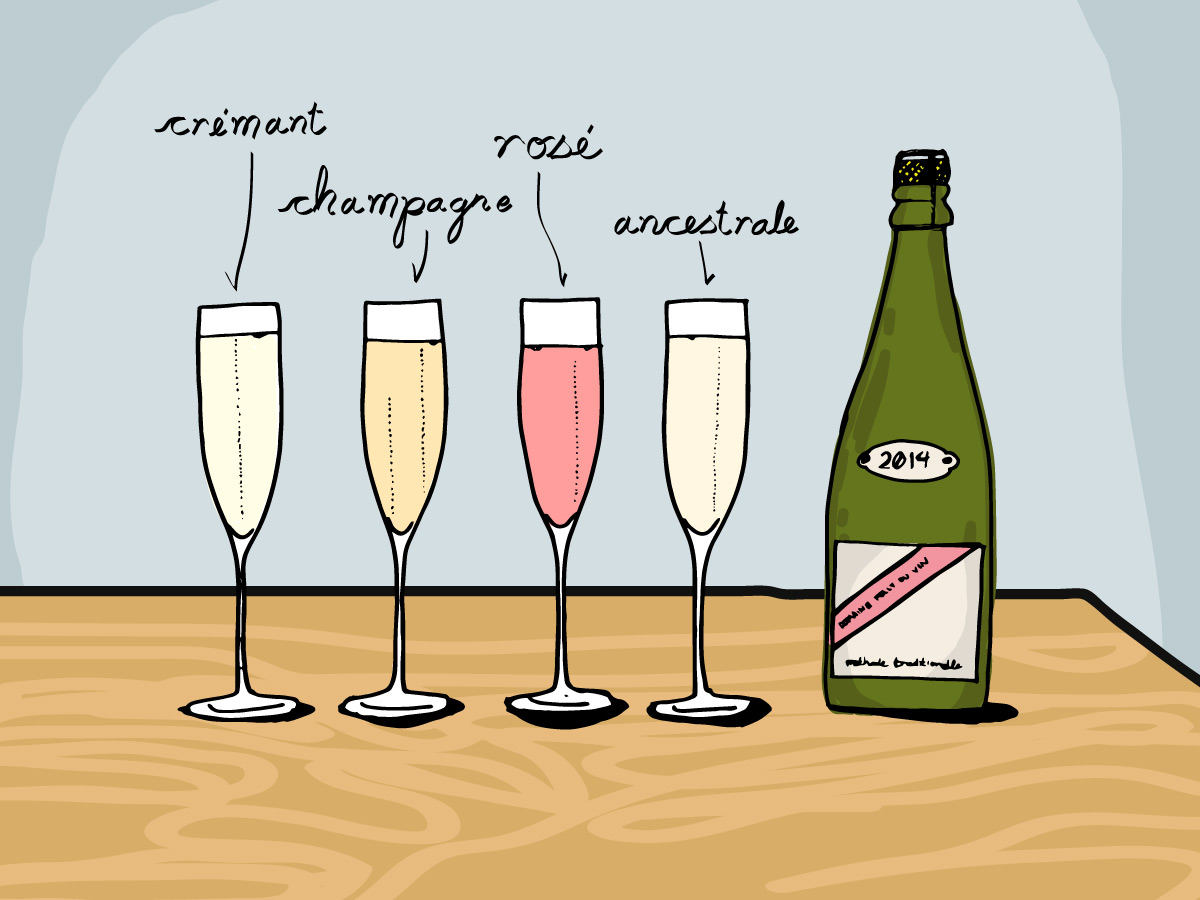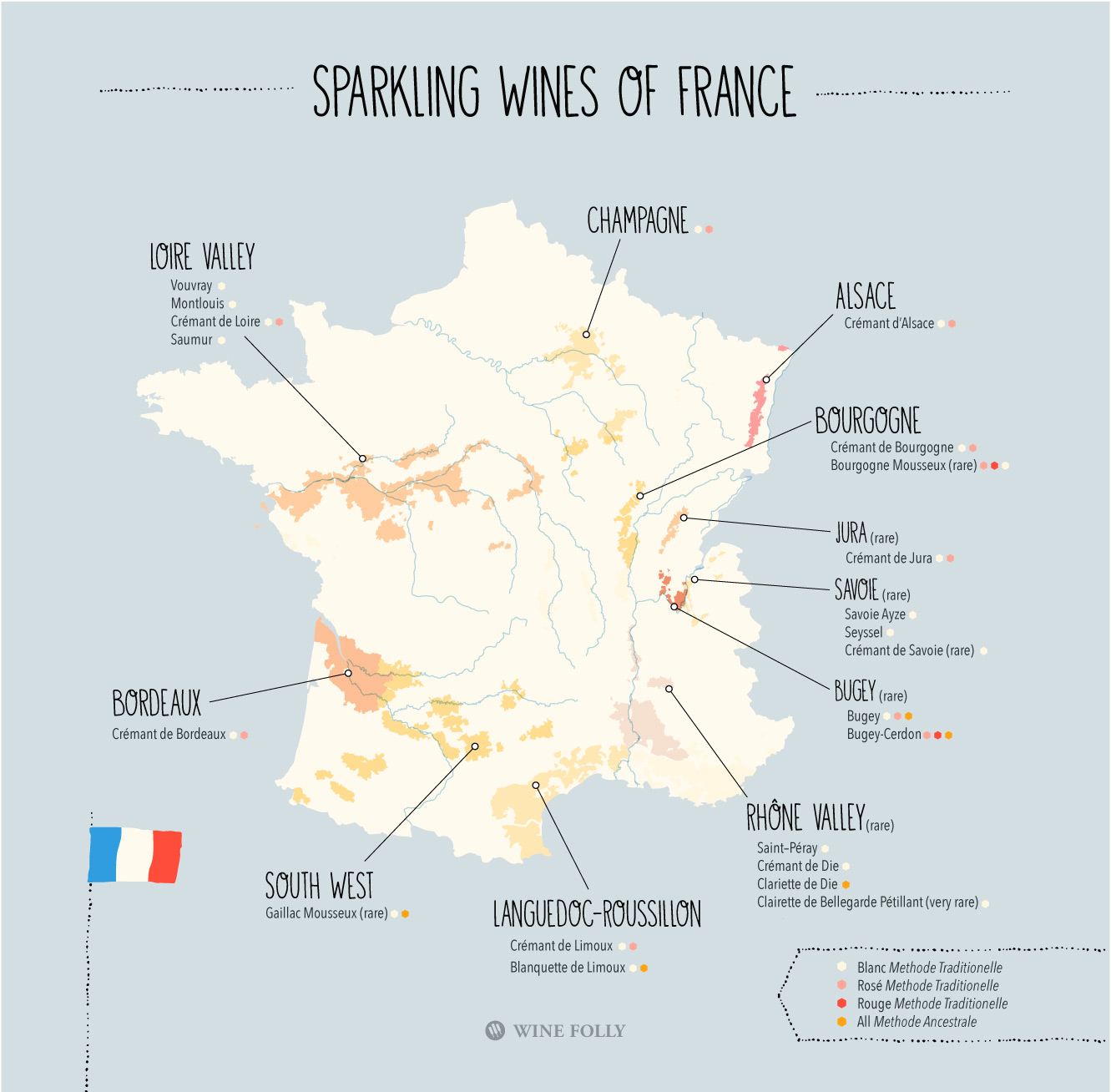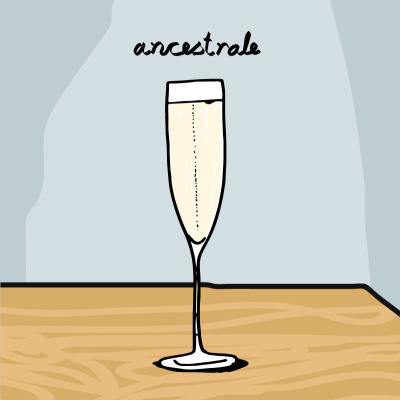Get to know the other sparkling wines of France; from the aromatic Chenin Blanc-based Vouvray to the strawberry-like Pinot Noir Crémant d’Alsace Rosé. There is also an old style of sparkling wine production that was popular during King Henry the VIII’s era. What’s surprising to note is that many of these regions will cost you less than twenty to get into.
Beyond Champagne: The 23 Sparkling Wines of France
A great bottle of bubbly makes life feel just a bit more amazing. It happens when those tiny bubbles hit your tongue. In that moment, you realize all the little things that bother you, don’t matter. You find yourself relaxing and appreciating everything you a little bit more. As it happens, there are 23 French bubbly regions including Champagne. It has been recently noted, that Limoux in the Languedoc-Roussillon may in fact be truly the first French bubbly region.
“A great bottle of bubbly makes life feel just a bit more amazing.”
Sparkling Wines of France Map
The Styles of French Sparkling Wine
Beyond the term ‘Brut’ (which describes the sweetness level in bubbly), there two primary methods used for making sparkling wine in France: Methode Traditionelle and Methode Ancestrale.
Methode Traditionelle
This is the method that Champagne uses to make sparkling wine. This bubbly-making technique is also employed in all the Crémant regions, “Mousseux” Appellations in the Loire and a few others such as Bugey and Seyssel. It’s quite likely if the the bottle says ‘Brut’ that it’s Methode Traditionelle. Just look for the small-printed “Methode Traditionelle” or “Methode Champenoise” on the label. You will find there are a few select producers who make really solid quality wines that are perfect for midweek sipping and usually last up to 2 nights.
Methode Ancestrale
A method used around the the era of King Henry the VIII, Michelangelo and Copernicus. You’ll note it seems very similar to the way craft cider or ale is made. After the wine fermentation begins, before the yeast ‘finish’ fermenting the sugar into alcohol the wine is bottle. The pressure made from the remaining fermentation carbonates the wine. So the winemaker has to time it, juuust right. Then, they’ll usually pop a crown cap or cider-style cork in and wait. You’ll want to pour them slowly and at an angle (like an ale) to separate the clear wine if the wine is unfiltered. The wines will have less bubbles than traditional Champagne, in a bubble style far similar to beer. Expect a fine creamy texture but much more delicate froth, so the grape flavor comes across more intensely.
We’ve spotted Methode Ancestrale wines from Gaillac Mousseux, Bugey-Cerdon (a dark fruity rosé), Montlouis and Blanquette de Limoux primarily in the hip independent wine shops around the country.
Sparkling Wines from the Loire
The majority of Loire sparkling wines are made with Chenin Blanc in the Méthode Traditionelle style. You’ll find many examples from Vouvray and Montlouis (Soounds like “mont-Louie”). These wines will have floral aromas of acacia and carnation and fruit notes of pear and apple. They are a lovely match for lightly spiced, coconut curry dishes and creamy chicken dishes. The Crémant de Loire wines can also include a bit of Chardonnay or Cabernet Franc (for the rosé).
Sparkling Wines from Burgundy
Most Crémant de Bourgogne is made in Côte Chalonnaise. These sparkling wines use the 2 main grapes of Burgundy: Pinot Noir and Chardonnay. It’s a bit warmer in Bourgogne so these wines often will have a ‘riper’ flavor than their bone-dry Champagne neighbors. If it says ‘Millésime’ it means it’s a single-vintage wine which usually has additional lees aging –a technique practiced in Champagne.
Sparkling Wines from Alsace
Alsace makes white Crémant d’Alasce with Pinot Gris, Pinot Blanc, Riesling and Chardonnay and rose Crémant d’Alasce with 100% Pinot Noir. Alsace sparkling wine is pretty fruity (think lemons, strawberries, and honeysuckle), which make it perfect for those who are trying to develop their palate to fine sparkling wine. Try it with Morrocan cuisine.
Sparkling Wines from Limoux, Languedoc-Roussilon
Languedoc-Roussillon hums along undetected, but it’s actually the largest wine region of France and perhaps the oldest. Crémant Limoux is Chardonnay, Mauzac, and Chenin Blanc. The region actually has records of their sparkling wine production since 1531 which is a few years older than Champagne. If you want to try a wine made with the Ancestrale method, look for the Blanquette de Limoux from this area (90%+ Mauzac, an indigenous grape).
Explore More
We didn’t mention all the sparkling wine regions, but there are more great ones to discover on your own. All you have to remember is to think about what the climate is like where the wine is made to understand how it will taste.




